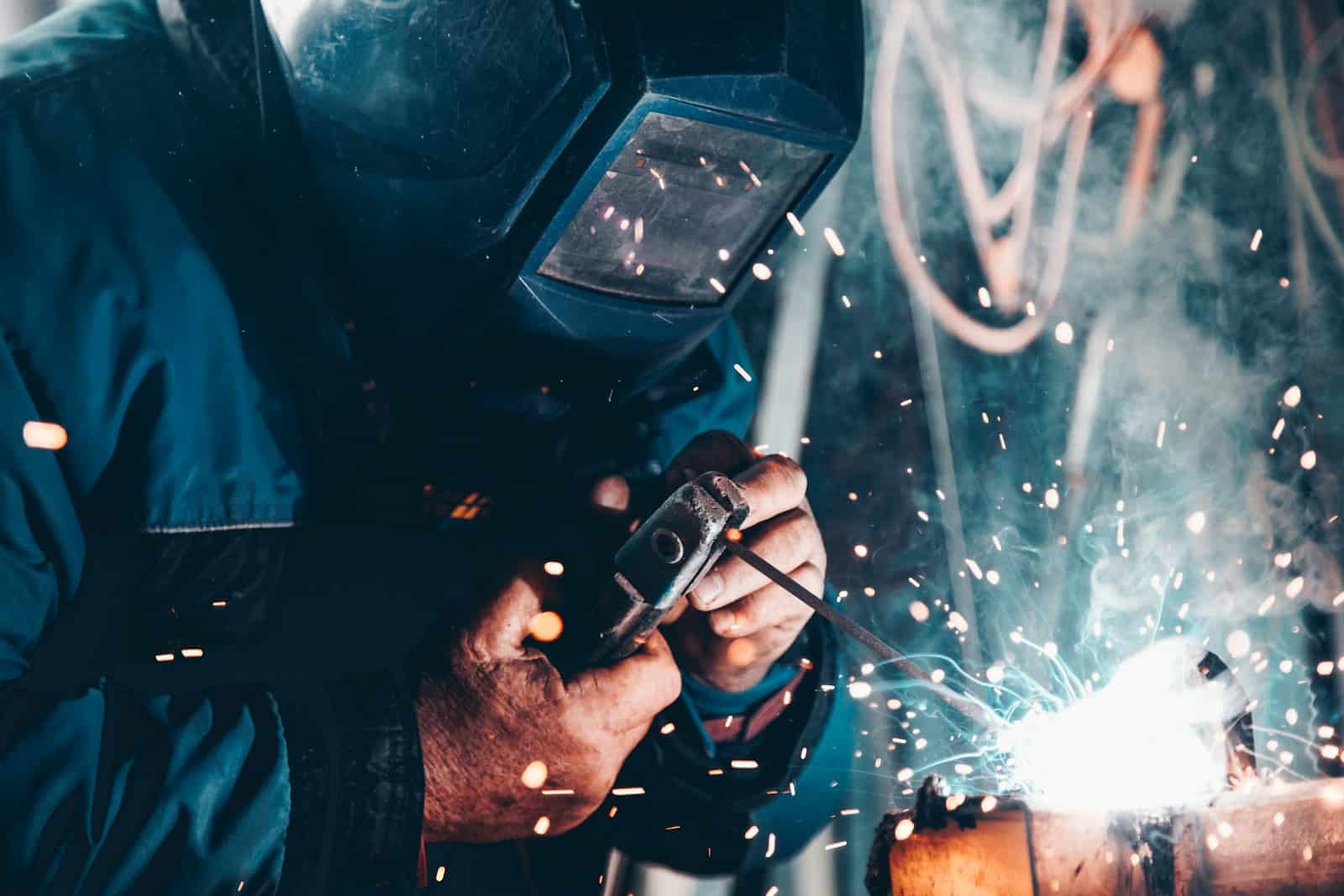Kaizen in design is not just another buzzword. It’s an effective strategy that can make a significant difference in your design work. As an industrial engineer who now works as a lean management consultant, I’ve witnessed the impact of applying Kaizen principles to design workflows. You’ll increase efficiency, minimize mistakes, and even improve creativity. Companies that use Kaizen see a 25-30% increase in productivity. So, let’s discuss how you can implement this winning methodology in your design work.
Kaizen Principles in Design

Kaizen in design is an effective way to continuously improve your design workflow. It originates from Japanese manufacturing principles and has worked its way into various industries, including design. I’ve witnessed how Kaizen can revolutionize design processes and increase productivity.
The main concepts of Kaizen are teamwork, personal discipline, morale improvement, and quality circles, all of which work together to create a culture of continuous improvement. Sure enough, when you introduce Kaizen to your team, you’ll notice it becomes more cohesive and motivated.
The PDCA Cycle (Plan-Do-Check-Act) is a basic framework within Kaizen. In design, it looks like this:
- Plan: Identify opportunities to improve your design process.
- Do: Make small changes.
- Check: Assess the impact of those changes.
- Act: Establish the successful changes as standard, and repeat the cycle.
The 5S framework is also a critical part of Kaizen for design:
- Sort (Seiri): Get rid of any tools or files you don’t need.
- Set in order (Seiton): Organize what’s left in a logical manner for easy access.
- Shine (Seiso): Keep your workspace clean.
- Standardize (Seiketsu): Create standardized work processes.
- Sustain (Shitsuke): Keep it that way over time.
Embracing the mindset of continuous improvement is important. Always be on the lookout for even the smallest opportunity to improve your design workflow. Over time, you’ll make many small improvements to your design workflow. Then, eventually, you’ll find yourself with a drastically more efficient design process.
Companies that implement Kaizen often report a 25-30% productivity improvement. That’s a significant improvement that’s hard to ignore. By using these principles to optimize your design process, you’re setting yourself up to be significantly more efficient. This approach can be particularly effective when applied to kaizen in technology, helping to boost your business’s overall performance.
Benefits of Kaizen in Design
Applying Kaizen to your design workflow offers many benefits, and I’ve watched teams completely transform their design process and output quality through these principles. Let’s discuss the primary benefits:
- Increased productivity and efficiency in design processes
- Higher quality and fewer defects in design outputs
- Higher employee engagement and satisfaction
- Cost savings through more efficient processes
- Faster time to market on design projects
- Higher customer satisfaction with improved designs
You’ll notice these benefits apply to both internal operations and external results. Your team becomes more efficient and satisfied, and your clients receive higher quality designs more quickly.
Employee engagement increases by 70% when organizations implement Kaizen principles. This is a powerful statistic about the impact of Kaizen on job satisfaction. If you involve your design team in the improvement process, they’ll feel more valued and satisfied with the results.
Reducing time to market is critical in today’s competitive landscape, and Kaizen helps you identify and remove bottlenecks in your design process. As a result, you can deliver higher quality designs to your clients more quickly, giving yourself a competitive advantage.
Cost savings is another major benefit. By making your processes more efficient and reducing defects, you’ll waste fewer resources and reduce rework. And that efficiency goes straight to your bottom line. This approach can be particularly beneficial when applied to kaizen in finance, helping to boost overall money management in your organization.
Implementing Kaizen in Design Processes
Applying Kaizen to your design processes is a systematic process. I’ve walked many teams through this process, and here’s a step-by-step process based on my experience:
- Identify opportunities to improve design workflows.
- Form cross-functional design teams.
- Encourage team members to contribute ideas.
- Make small incremental improvements.
- Track and measure the impact of improvements.
- Continuously optimize and adjust design workflows.
The first step is to evaluate your current design workflow. Where are the bottlenecks, inefficiencies, or areas where the quality of the design might be compromised? Involve your entire team in this process. They likely have insights that you, as the manager, might not consider.
Forming cross-functional teams is essential, as you need people from different perspectives to work together to improve it. This ensures that you take a holistic view of the design workflow. For example, you might have a team with a designer, project manager, and even someone from the client, as all of them have a different perspective you can improve.
Creating a culture where team members are comfortable contributing ideas for improvement is the secret to making Kaizen work. You can facilitate this by brainstorming together or setting up a suggestion system.
Remember, the changes should be small. Don’t try to change everything at once. Instead, pick one small thing you can improve, and then measure the impact. This makes it more feasible to manage and prevents your team from getting overwhelmed and feeling like nothing is ever good enough.
You must track and measure your improvements. Set a clear metric for success and follow it diligently. This data will help you decide what to improve next and show the impact of Kaizen to your team and higher-ups.
Kaizen Tools and Techniques for Design

Kaizen has several tools and techniques that can make a big impact on your design process. I’ve personally used these tools and techniques with great success in design environments:
- Value Stream Mapping: Visualize your design process to eliminate waste and inefficiencies
- Root Cause Analysis: Dig deeper to find the true cause of design issues
- A3 Problem Solving: A structured approach to solve design problems
- Kanban boards: Visualize your design workflow and manage WIP (work in process)
- Gemba walks: Observe the actual design process to uncover insights
- Design-specific Kaizen events: Host a workshop focused directly on improving your design team
Value Stream Mapping helps you understand the end-to-end design process. You’ll see where time is wasted and where value is created. Most teams find this visual representation to be eye opening.
Root Cause Analysis is key to stopping recurring design issues. You’ll force yourself to stop blaming the tool and really ask why. As a result, your solutions will be more effective and permanently fix the problem.
A3 Problem Solving gives you a structured approach to solving design problems. You’ll ensure you start with a clear problem statement, thoroughly analyze the problem, and then implement an effective solution.
Kanban boards are excellent for managing a design workflow. Most design teams just throw tasks in a project management tool with no visualization of WIP. As a result, they can’t balance their workload or identify bottlenecks.
Gemba walks include observing the actual design process. Often, just observing the design process can reveal improvements that no one would tell you about in reports and meetings.
When using these tools and techniques, you’ll see a 20-40% reduction in design defects in the first year. This is a massive improvement. It’s proof that Kaizen is a great way to improve design quality. Consider organizing a kaizen workshop to introduce these tools and techniques to your team and improve your business processes.
Kaizen and User-Centered Design Integration
Using Kaizen principles with user-centered design is a powerful combination. It strengthens both your design process and the final design. I’ve seen great success with teams that apply these principles. Kaizen principles are a natural fit with user-centered design. Both are focused on continuous improvement and value creation. By incorporating user feedback into your Kaizen cycles, you are aligning your design directly with your end users’ needs and preferences. Iterative prototyping and testing also becomes more effective using Kaizen. Instead of simply creating prototypes, you are continuously improving your prototyping process.
As a result, you will have more efficient and effective testing cycles. The key to this integration is balancing improvements in design efficiency with improvements in the user experience. Kaizen makes your processes more efficient, but always keep the user experience at the forefront. Encouraging collaborative problem solving between users and the design team is another key benefit of this integration.
If you encourage direct collaboration between users and your design team, you will likely find that the users will help the design team think of solutions that they didn’t think of on their own. Measuring design efficiency and user satisfaction becomes a core part of your Kaizen cycles. Develop metrics that measure the efficiency of the design process while also capturing the user experience.
This end-to-end approach ensures that every improvement you make benefits both your design team and your users. Keep in mind that the ultimate goal is still to create a design that users love while continuously improving your process. If you integrate Kaizen with user-centered design, you will have a major competitive advantage in your market.
Measuring Design Improvements through Kaizen
It’s important to measure the impact of Kaizen on your design process as it’s the only way you’ll know what’s working and what isn’t. I’ve discovered that using a mix of quantitative and qualitative metrics is the best way to get the full picture.
Here are some key performance indicators (KPIs) you might use to measure your design process:
| KPI | Description |
|---|---|
| Time-to-completion | The average time it takes to complete a design project |
| Defect rate | The percentage of designs that needed significant revisions |
| Customer satisfaction | A score from 1-10 based on how happy your client is with the design |
| Team collaboration | A rating from 1-10 on how well your team works together |
| Innovation level | The number of new design concepts you produced |
| Design quality | A score from 1-10 based on predefined quality criteria |
Quantitative metrics like time-to-completion and defect rates help you to see if you’re becoming more efficient and making fewer mistakes. You can easily record and compare these metrics over time to gauge your progress.
Qualitative metrics like team collaboration and innovation levels give you data on the less tangible, but often equally important, areas of your design process. You can gather these by sending out surveys, asking peers for input, and discussing as a team.
It’s important to have tools that allow you to track and visualize improvements in your design process. Use project management software with analytics or build your own dashboards to keep an eye on your KPIs. If you can turn your KPIs into visuals, your team can quickly see the progress you’re making (or identify where you’re falling short).
You’ll also need to consistently review and adjust how you’re measuring your design process. As your process changes, so should your measurement criteria. And remember that what gets measured gets managed, so make sure your KPIs reflect your current priorities and values. Understanding how to use kaizen metrics can significantly improve your business processes and overall performance.
Case Study: Toyota’s Design Process Improvement

Toyota’s application of Kaizen to its design process is a great example of the potential of Kaizen. Using this approach, each Toyota employee generated 60–70 improvement suggestions per year, and 90%+ of the employees’ suggestions were implemented. Those numbers are mind boggling and illustrate the power of involving each employee in the improvement process.
Toyota applied the principles of Kaizen to its entire design process, from initial design concept to final production. The focus was on eliminating waste, improving how different departments communicated, and streamlining the decision-making process.
One specific change they made was to implement obeya (or “big room”) meetings for design projects, where all relevant stakeholders were present. This dramatically improved communication and the speed at which design projects could solve problems. The result was lower time from initial design to having models ready for production.
The impact of implementing Kaizen was a lower design cycle time, better first-time quality of designs, and more innovation. Toyota could also bring new car models to market faster than other auto companies. The implications were huge in terms of winning more market share from other brands.
The key takeaways from Toyota’s experience are:
- Get all employees involved in the improvement process.
- Don’t do major overhauls. Instead, focus on making a lot of small improvements.
- Design systems to make it easy for employees to communicate and make decisions quickly.
- Measure the impact of improvements on the business.
You can take these same principles and apply them to your own design process. Remember, Kaizen is all about making small improvements. Pick one area of your process, apply these principles, and you’ll see the process become more efficient and higher quality over time. For more inspiration, you can explore various kaizen examples to see how they can improve your work and design processes.
To Sum It Up
I’ve helped numerous companies apply Kaizen principles to their design processes, and the results speak for themselves. Companies achieve higher productivity, efficiency, and employee satisfaction. Kaizen’s emphasis on continuous improvement revolutionizes design workflows. It minimizes defects, improves quality, and shortens time to market.
Applying Kaizen to design isn’t just about following a set of step-by-step principles, though. It’s a mindset change that allows every team member to contribute improvements. In my experience, this approach produces more creative solutions and more satisfied employees.
Just keep in mind that Kaizen is a journey. Continuously refine your processes, measure your progress, and get your team involved. You’ll be surprised how much better your design work is and how much happier your team is.






